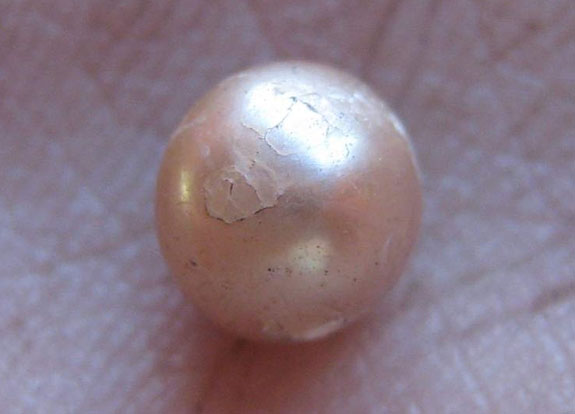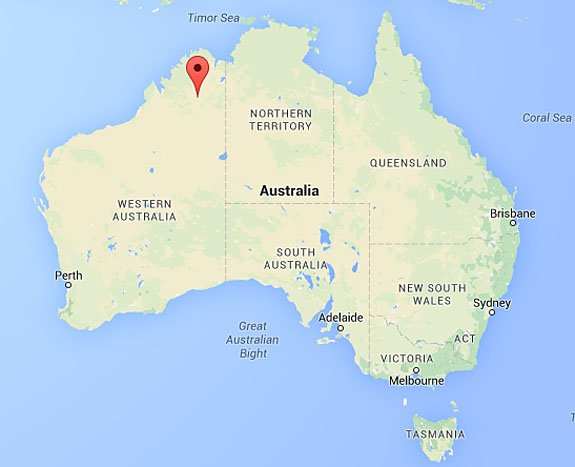June 8th, 2015
Archaeologists excavating a remote Aboriginal site on the Kimberley coast of Western Australia discovered a 2,000-year-old natural South Sea pearl.

Nearly round, in remarkably good condition and measuring 5mm in width, the white pearl with pink and gold overtones baffled scientists. How could a natural pearl of this size, shape and age survive 2,000 years underground? This specimen was the first of its kind to be found on this island continent.

The resource-rich Kimberley region of Australia is famous for producing most of the world’s pink diamonds and for having a robust cultured pearl industry, so maybe it's not coincidental that this most recent find occurred in Kimberley.
Researchers from the University of Wollongong suspected that the pearl was natural, but needed to be certain that a modern cultured pearl hadn’t been introduced to the ancient Aboriginal site.
The archaeologists were challenged with the task of dating and authenticating the natural pearl without taking a sample, thereby damaging it.
They decided to use a micro CT scan to prove that the pearl was naturally formed and had no nucleus (the seed that is used in the cultured pearl process.) The shell around the pearl was radiocarbon dated to about 2,000 years ago.
“Natural pearls are very rare in nature and we certainly — despite many, many [oyster] shell middens being found in Australia — never found a natural pearl before,” Kat Szabo, an associate professor at the University of Wollongong, told Discovery News.
A midden is a collection of refuse. The pearl was discovered in a midden about two feet below the surface. Szabo said that it would have taken 10 years for the natural pearl to grow to the size of 5mm.
Scientists had understood that the indigenous people of Australia had used oysters in rainmaking ceremonies. They were just not sure when the practice began. The age of the natural pearl offers evidence that the rainmaking ritual goes back at least two millennia.
The now-famous natural pearl will go on display at the Western Australian Maritime Museum in Perth later this month.
Images: University of Wollongong, Google Maps.

Nearly round, in remarkably good condition and measuring 5mm in width, the white pearl with pink and gold overtones baffled scientists. How could a natural pearl of this size, shape and age survive 2,000 years underground? This specimen was the first of its kind to be found on this island continent.

The resource-rich Kimberley region of Australia is famous for producing most of the world’s pink diamonds and for having a robust cultured pearl industry, so maybe it's not coincidental that this most recent find occurred in Kimberley.
Researchers from the University of Wollongong suspected that the pearl was natural, but needed to be certain that a modern cultured pearl hadn’t been introduced to the ancient Aboriginal site.
The archaeologists were challenged with the task of dating and authenticating the natural pearl without taking a sample, thereby damaging it.
They decided to use a micro CT scan to prove that the pearl was naturally formed and had no nucleus (the seed that is used in the cultured pearl process.) The shell around the pearl was radiocarbon dated to about 2,000 years ago.
“Natural pearls are very rare in nature and we certainly — despite many, many [oyster] shell middens being found in Australia — never found a natural pearl before,” Kat Szabo, an associate professor at the University of Wollongong, told Discovery News.
A midden is a collection of refuse. The pearl was discovered in a midden about two feet below the surface. Szabo said that it would have taken 10 years for the natural pearl to grow to the size of 5mm.
Scientists had understood that the indigenous people of Australia had used oysters in rainmaking ceremonies. They were just not sure when the practice began. The age of the natural pearl offers evidence that the rainmaking ritual goes back at least two millennia.
The now-famous natural pearl will go on display at the Western Australian Maritime Museum in Perth later this month.
Images: University of Wollongong, Google Maps.



